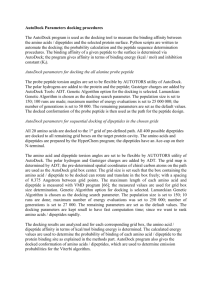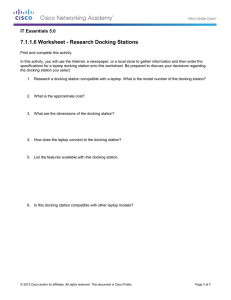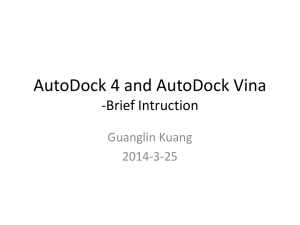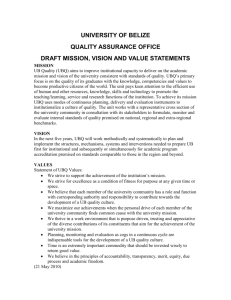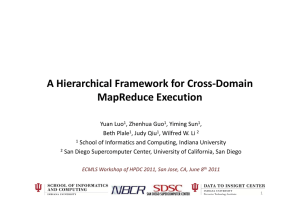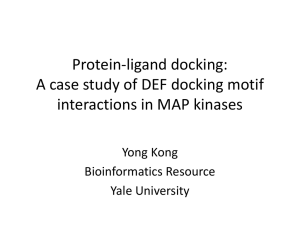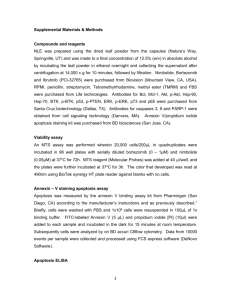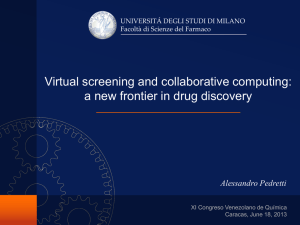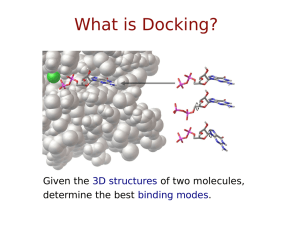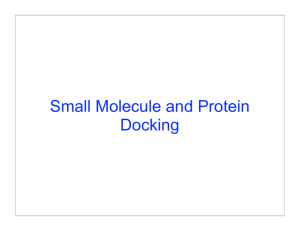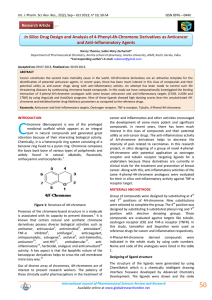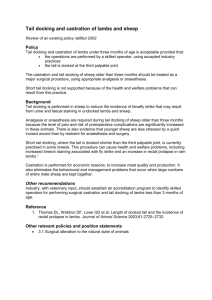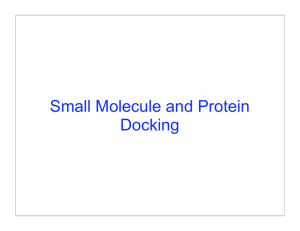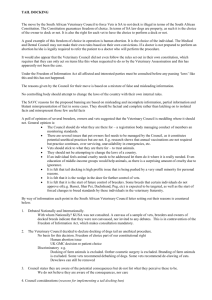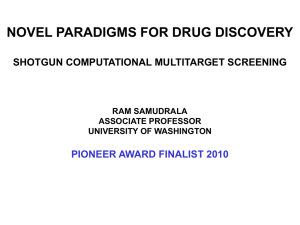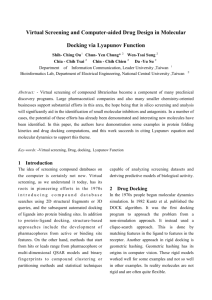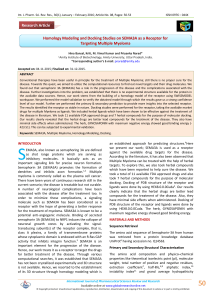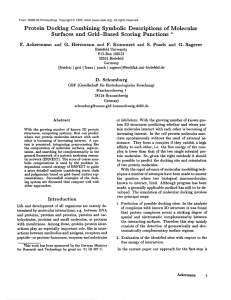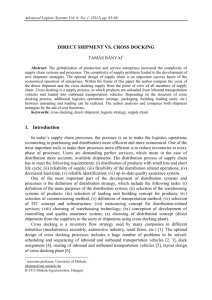TOS interaction with UbQ binding in complex II
advertisement
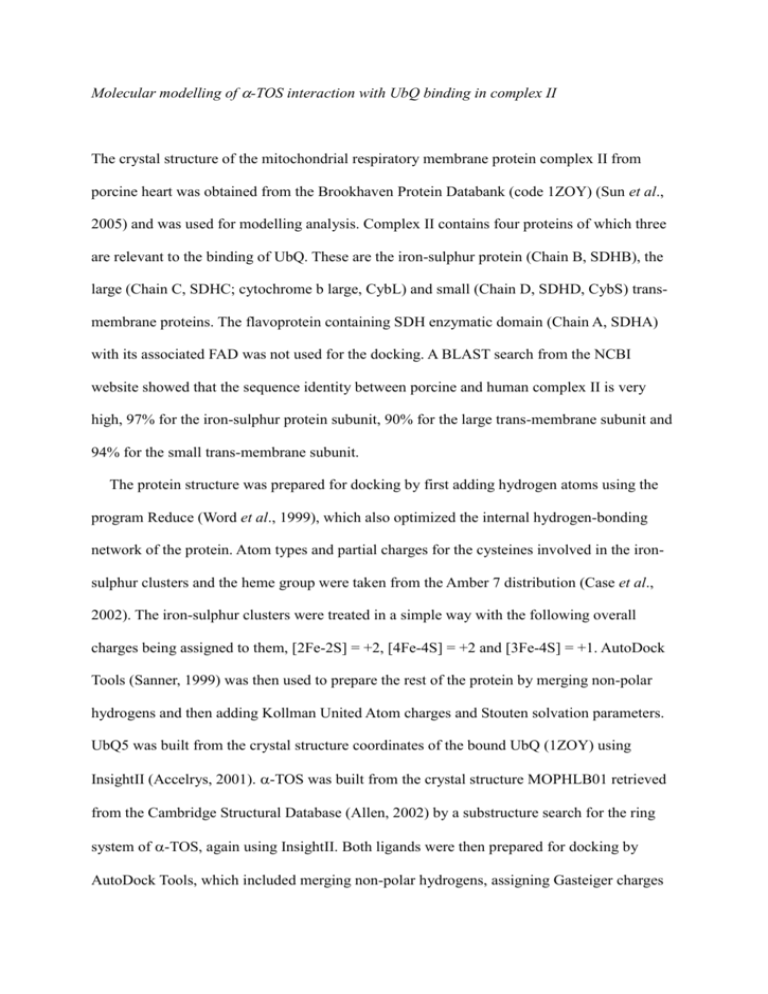
Molecular modelling of -TOS interaction with UbQ binding in complex II The crystal structure of the mitochondrial respiratory membrane protein complex II from porcine heart was obtained from the Brookhaven Protein Databank (code 1ZOY) (Sun et al., 2005) and was used for modelling analysis. Complex II contains four proteins of which three are relevant to the binding of UbQ. These are the iron-sulphur protein (Chain B, SDHB), the large (Chain C, SDHC; cytochrome b large, CybL) and small (Chain D, SDHD, CybS) transmembrane proteins. The flavoprotein containing SDH enzymatic domain (Chain A, SDHA) with its associated FAD was not used for the docking. A BLAST search from the NCBI website showed that the sequence identity between porcine and human complex II is very high, 97% for the iron-sulphur protein subunit, 90% for the large trans-membrane subunit and 94% for the small trans-membrane subunit. The protein structure was prepared for docking by first adding hydrogen atoms using the program Reduce (Word et al., 1999), which also optimized the internal hydrogen-bonding network of the protein. Atom types and partial charges for the cysteines involved in the ironsulphur clusters and the heme group were taken from the Amber 7 distribution (Case et al., 2002). The iron-sulphur clusters were treated in a simple way with the following overall charges being assigned to them, [2Fe-2S] = +2, [4Fe-4S] = +2 and [3Fe-4S] = +1. AutoDock Tools (Sanner, 1999) was then used to prepare the rest of the protein by merging non-polar hydrogens and then adding Kollman United Atom charges and Stouten solvation parameters. UbQ5 was built from the crystal structure coordinates of the bound UbQ (1ZOY) using InsightII (Accelrys, 2001). -TOS was built from the crystal structure MOPHLB01 retrieved from the Cambridge Structural Database (Allen, 2002) by a substructure search for the ring system of -TOS, again using InsightII. Both ligands were then prepared for docking by AutoDock Tools, which included merging non-polar hydrogens, assigning Gasteiger charges and defining the rotatable bonds. Docking was performed using the Lamarckian Genetic Algorithm as implemented in Autodock 3.0.5. (Morris et al., 1998). Two docking grids were prepared. Both were 126x126x126 points with a grid pacing of 0.375 Å, with the first centred on Tyr173 (Chain B) in the QP binding site and the second centred on Trp134 (Chain D) in the proposed QD binding site. Default AutoDock parameters were used except for the following, which were increased due to the relatively high number of rotatable bonds present in the ligands of interest (UbQ5 = 16, -TOS =17) :- ga_run = 250, ga_pop_size = 250, ga_num_evals = 10,000,000. Also, the parameter rmstol was increased to 2.5, to produce more manageable clusters during the analysis phase of the calculation. Each docking calculation took just over 24 h on a 2.2 GHz AMD Opteron-based computer. Analysis of the results was performed using scripts provided with AutoDock and the docked structures were viewed using Astex Viewer (Hartshorn, 2002).
